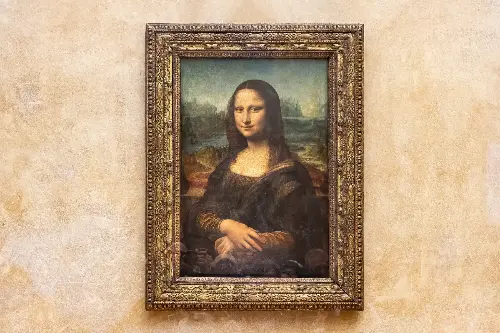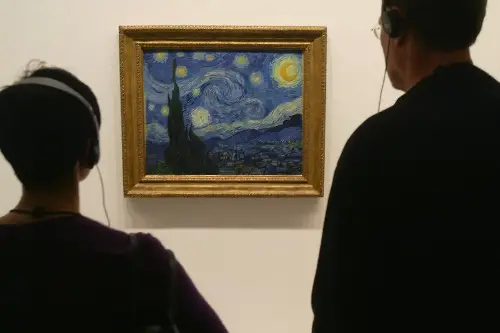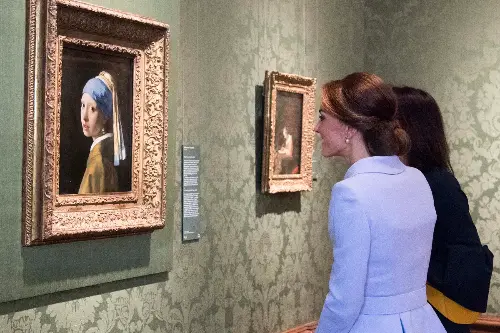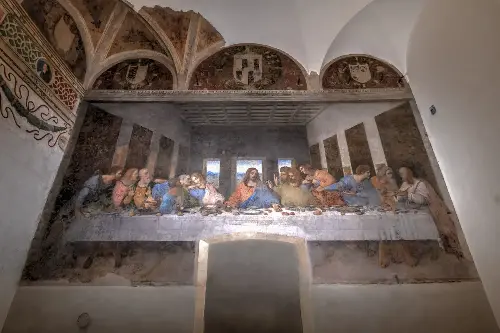The world of art is a treasure trove of mystery, beauty, and profound human expression. From the enigmatic smile of the Mona Lisa to Van Gogh's swirling depiction of night skies, iconic paintings capture our imagination and reflect the complex inner worlds of their creators. These masterpieces, steeped in history and artistic genius, continue to inspire curiosity and debate. Join us as we explore the captivating stories and enduring allure of art's most celebrated creations, uncovering the secrets and symbolisms that have fascinated audiences for generations.
The Allure of Mona Lisa's Smile: Beyond Da Vinci's Mastery

Leonardo da Vinci's Mona Lisa is undoubtedly one of the most celebrated works of art in history. Its perpetual allurement lies not only in the mastery of its creator but also in the myriad of unsolved mysteries that surround it. The sitter's enigmatic smile continues to captivate viewers and spark theories ranging from her identity - often believed to be Lisa Gherardini, the wife of a Florentine merchant - to speculation about her subtle expression and what it might signify. Da Vinci's revolutionary sfumato technique, a way of blurring lines and edges, plays a significant role in crafting this intrigue. Additionally, the work was stolen in 1911, an event that catapulted it to global fame. Recovered two years later, the story of its theft continues to be a pivotal chapter in the painting's enduring legacy.
Van Gogh's Starry Night: A Glimpse into the Artist's Psyche

The swirling night sky depicted in Van Gogh's Starry Night is an image that has burned itself into the collective consciousness. Beyond its vivid blue and dynamic brushwork lies the story of the artist's tumultuous psyche. Painted during his stay at the asylum in Saint-Rémy-de-Provence, it is believed to be more than just a representation of the night sky; it is a manifestation of Van Gogh's inner turmoil and yearning for solace. The village depicted is thought to be from his imagination, adding an element of mystery and personal insight into the otherwise inaccessible mind of the artist. Today, Starry Night is not only appreciated for its stunning aesthetic but for its connection to Van Gogh's troubled state, making it a poignant emblem of the link between creative genius and personal struggle.
The Persistence of Memory in Dalí's Dreamscape

Salvador Dalí's The Persistence of Memory, with its iconic melting clocks, is a surreal exploration of time and perception. Crafted in 1931, this painting is often interpreted as a reflection on the relativity of time and space. Dalí created a dreamscape where the concept of hard, measurable time is made limp and malleable, challenging the viewer's conventional understanding of reality. Curiously, the desolate landscape portrayed in the painting closely resembles the Catalan coastline of Dalí's childhood, thus infusing the work with a sense of personal geography. The peculiar ants and the distorted face in the centre of the canvas, which many believe to resemble Dalí himself, add yet another layer to dissect. Speculation about this painting's meaning has kept art critics and enthusiasts debating for decades, ensuring its spot as a cornerstone piece of the Surrealist movement.
The Enigma of Girl with a Pearl Earring

Vermeer's Girl with a Pearl Earring, often dubbed the 'Mona Lisa of the North', is a captivating image of a young girl who seems to be at the verge of speaking. The true subject of the painting remains unknown, leading to assumptions about her connection to Vermeer. This has inspired novels and films, most famously Tracy Chevalier's historical novel of the same name, which imagines the life of the model. Moreover, the luminous quality of the girl’s skin and the iridescent glow of the eponymous pearl highlight Vermeer's mastery of the use of light, a technique that gives the piece a living, breathing quality. The direct gaze of the subject creates a powerful, intimate encounter with the viewer, establishing a timeless connection that continues to resonate.
The Mysterious Last Supper and its Lasting Secrets

Leonardo da Vinci's The Last Supper is a masterpiece that captures the moment of Christ's betrayal with a complexity that has intrigued scholars for centuries. The positioning of the figures, their expressions, and the layout of the scene are shrouded in symbolic significance. Recent studies using infrared light revealed that the original painting, now sadly deteriorated due to experimental fresco techniques and wartime bombings, was even more detailed than what is seen today. The fresco holds hidden mathematical and astrological layers, making it a work of both art and science. One of the most debated elements is the figure of John the Apostle, who some theorists controversially suggest might be Mary Magdalene, based on the figure's traditionally feminine features. Despite the countless restorations and the natural decay over time, The Last Supper continues to awe with its artistic brilliance and enigmatic narrative.
Art has an exceptional way of touching lives across generations and geographies. These five iconic paintings are testaments to art's power to evoke curiosity, dialogue, and wonder. Through their compelling backstories and the brushstrokes of their creators, these masterpieces inhabit a fascinating intersection of beauty, history, and mystery, ensuring their place in the fabric of cultural heritage for centuries to come. Whether viewed in person or through the lens of a digital image, their stories remind us of the timeless human desire to create, interpret, and admire. The art world undoubtedly holds many more untold stories, just waiting to be explored and cherished by eager minds who find truth and beauty within their canvas confines.
